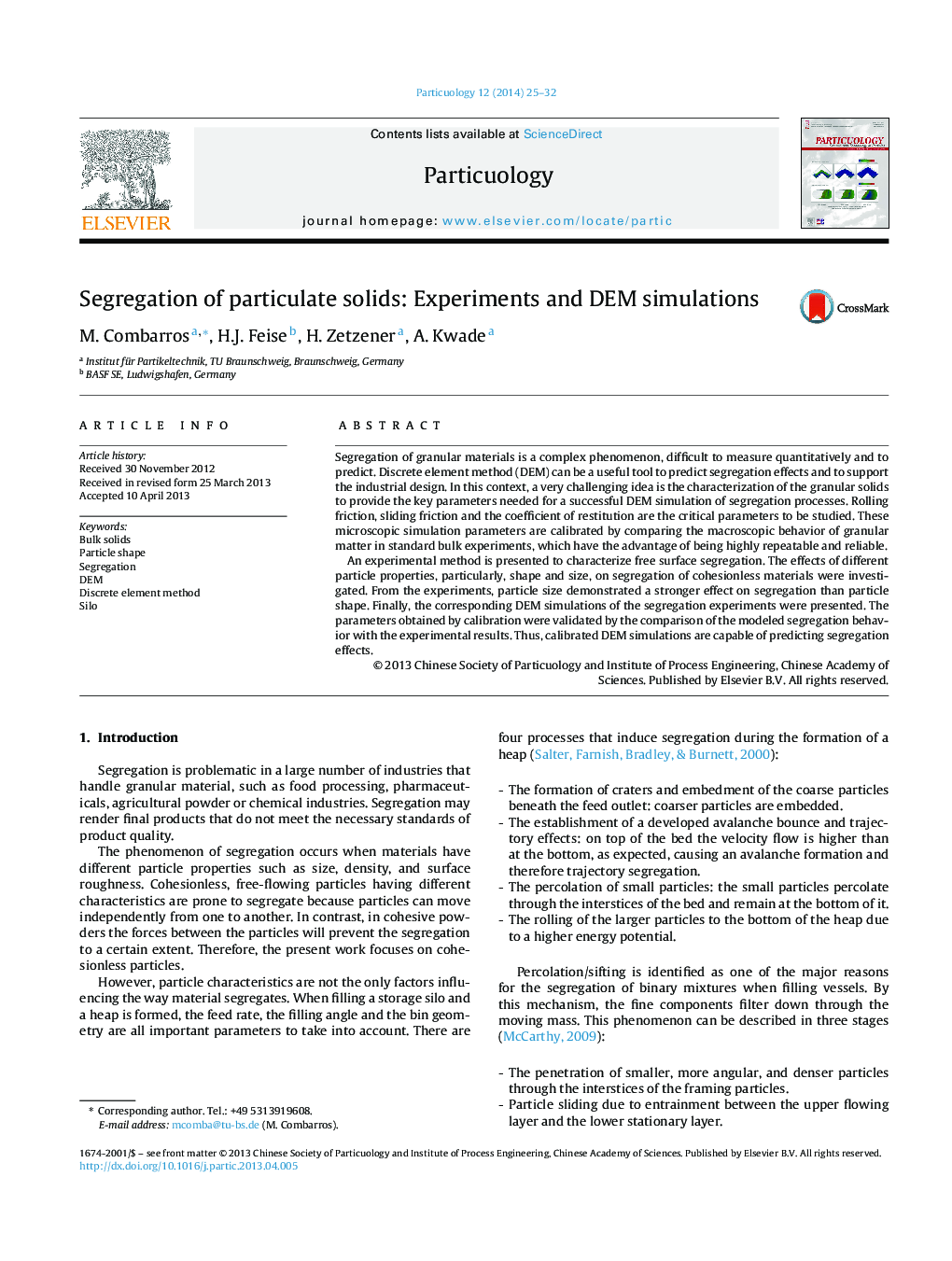| Article ID | Journal | Published Year | Pages | File Type |
|---|---|---|---|---|
| 671964 | Particuology | 2014 | 8 Pages |
•DEM parameters were calibrated by comparing simulation results with experiments.•DEM simulations and QPM segregation experiments show a good agreement.•Particle size has a stronger effect than particle shape on segregation.•Critical DEM parameters in segregation simulation are static and rolling friction.
Segregation of granular materials is a complex phenomenon, difficult to measure quantitatively and to predict. Discrete element method (DEM) can be a useful tool to predict segregation effects and to support the industrial design. In this context, a very challenging idea is the characterization of the granular solids to provide the key parameters needed for a successful DEM simulation of segregation processes. Rolling friction, sliding friction and the coefficient of restitution are the critical parameters to be studied. These microscopic simulation parameters are calibrated by comparing the macroscopic behavior of granular matter in standard bulk experiments, which have the advantage of being highly repeatable and reliable.An experimental method is presented to characterize free surface segregation. The effects of different particle properties, particularly, shape and size, on segregation of cohesionless materials were investigated. From the experiments, particle size demonstrated a stronger effect on segregation than particle shape. Finally, the corresponding DEM simulations of the segregation experiments were presented. The parameters obtained by calibration were validated by the comparison of the modeled segregation behavior with the experimental results. Thus, calibrated DEM simulations are capable of predicting segregation effects.
Graphical abstractFigure optionsDownload full-size imageDownload as PowerPoint slide
